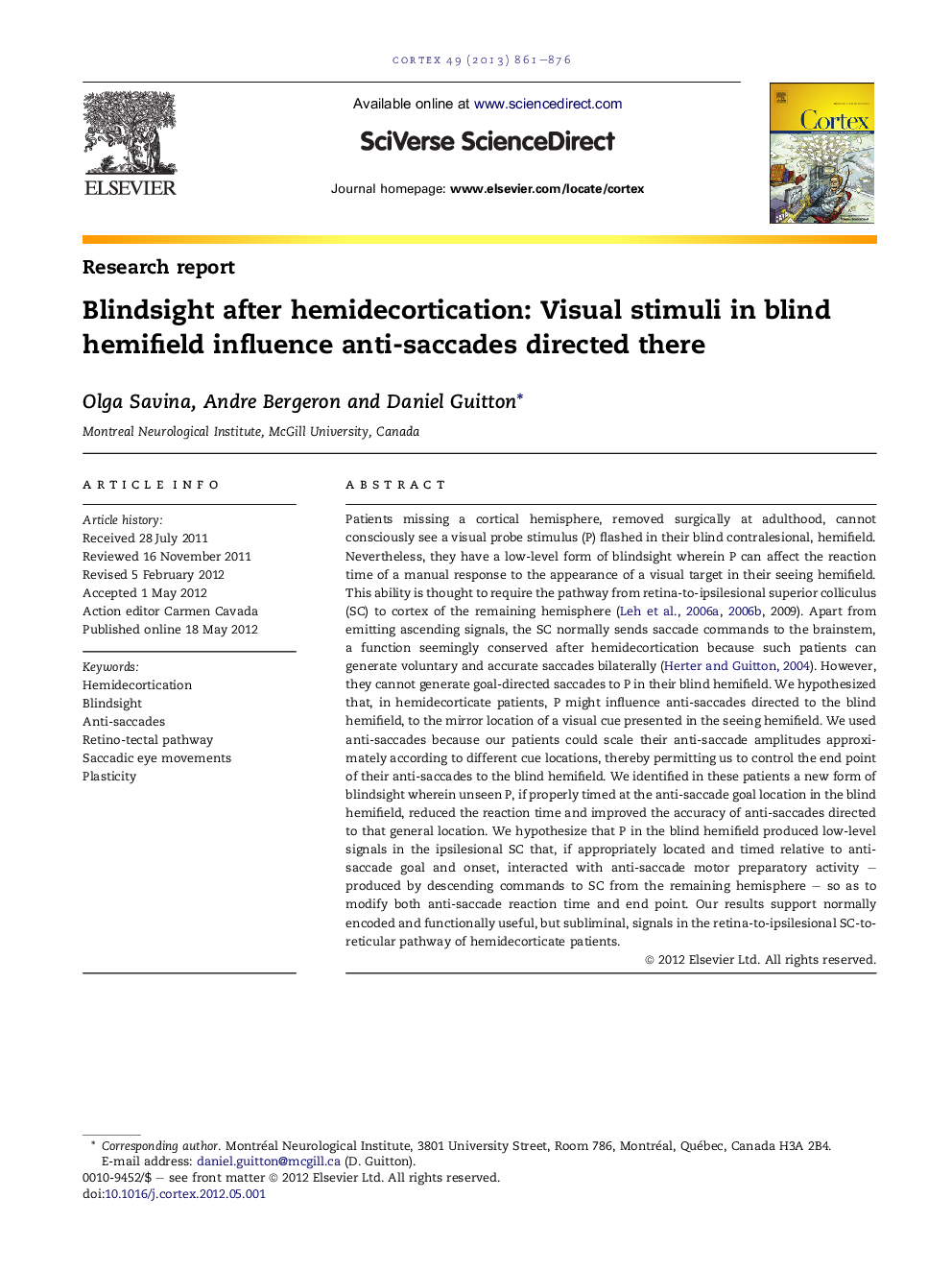| کد مقاله | کد نشریه | سال انتشار | مقاله انگلیسی | نسخه تمام متن |
|---|---|---|---|---|
| 10463229 | 925109 | 2013 | 16 صفحه PDF | دانلود رایگان |
عنوان انگلیسی مقاله ISI
Blindsight after hemidecortication: Visual stimuli in blind hemifield influence anti-saccades directed there
دانلود مقاله + سفارش ترجمه
دانلود مقاله ISI انگلیسی
رایگان برای ایرانیان
کلمات کلیدی
موضوعات مرتبط
علوم زیستی و بیوفناوری
علم عصب شناسی
علوم اعصاب رفتاری
پیش نمایش صفحه اول مقاله

چکیده انگلیسی
Patients missing a cortical hemisphere, removed surgically at adulthood, cannot consciously see a visual probe stimulus (P) flashed in their blind contralesional, hemifield. Nevertheless, they have a low-level form of blindsight wherein P can affect the reaction time of a manual response to the appearance of a visual target in their seeing hemifield. This ability is thought to require the pathway from retina-to-ipsilesional superior colliculus (SC) to cortex of the remaining hemisphere (Leh et al., 2006a, 2006b, 2009). Apart from emitting ascending signals, the SC normally sends saccade commands to the brainstem, a function seemingly conserved after hemidecortication because such patients can generate voluntary and accurate saccades bilaterally (Herter and Guitton, 2004). However, they cannot generate goal-directed saccades to P in their blind hemifield. We hypothesized that, in hemidecorticate patients, P might influence anti-saccades directed to the blind hemifield, to the mirror location of a visual cue presented in the seeing hemifield. We used anti-saccades because our patients could scale their anti-saccade amplitudes approximately according to different cue locations, thereby permitting us to control the end point of their anti-saccades to the blind hemifield. We identified in these patients a new form of blindsight wherein unseen P, if properly timed at the anti-saccade goal location in the blind hemifield, reduced the reaction time and improved the accuracy of anti-saccades directed to that general location. We hypothesize that P in the blind hemifield produced low-level signals in the ipsilesional SC that, if appropriately located and timed relative to anti-saccade goal and onset, interacted with anti-saccade motor preparatory activity - produced by descending commands to SC from the remaining hemisphere - so as to modify both anti-saccade reaction time and end point. Our results support normally encoded and functionally useful, but subliminal, signals in the retina-to-ipsilesional SC-to-reticular pathway of hemidecorticate patients.
ناشر
Database: Elsevier - ScienceDirect (ساینس دایرکت)
Journal: Cortex - Volume 49, Issue 3, March 2013, Pages 861-876
Journal: Cortex - Volume 49, Issue 3, March 2013, Pages 861-876
نویسندگان
Olga Savina, Andre Bergeron, Daniel Guitton,